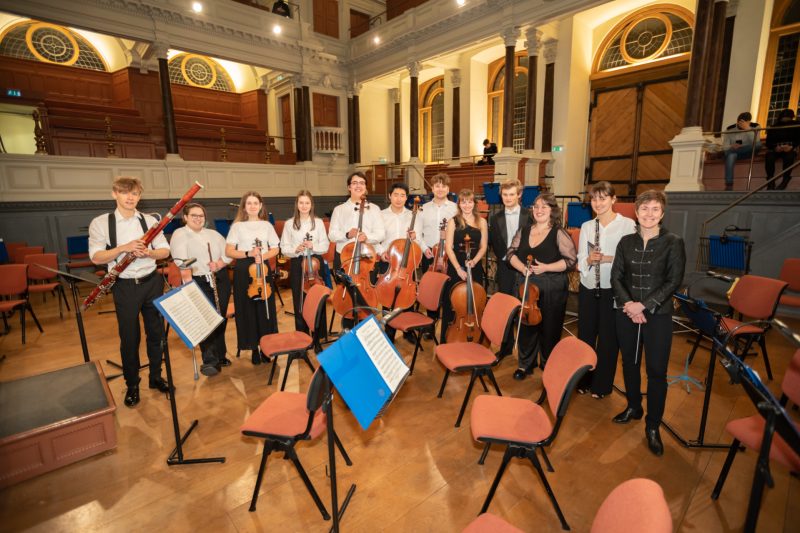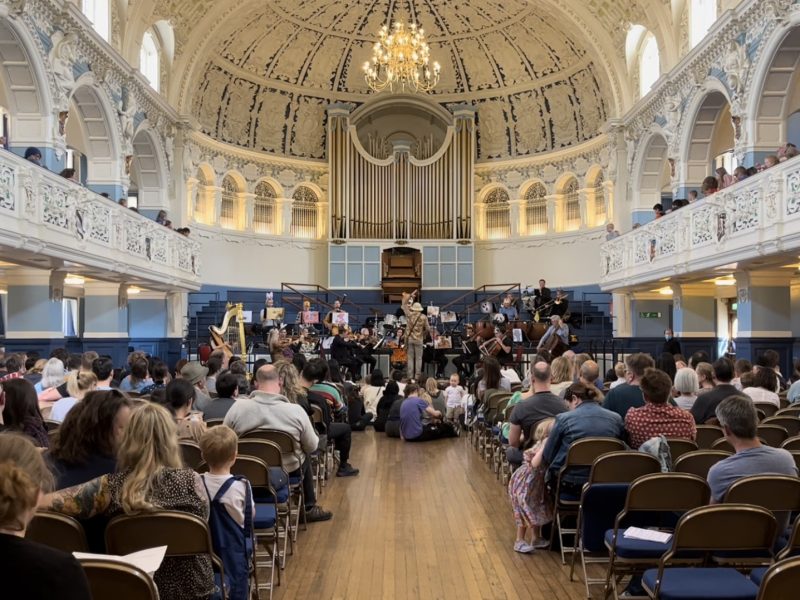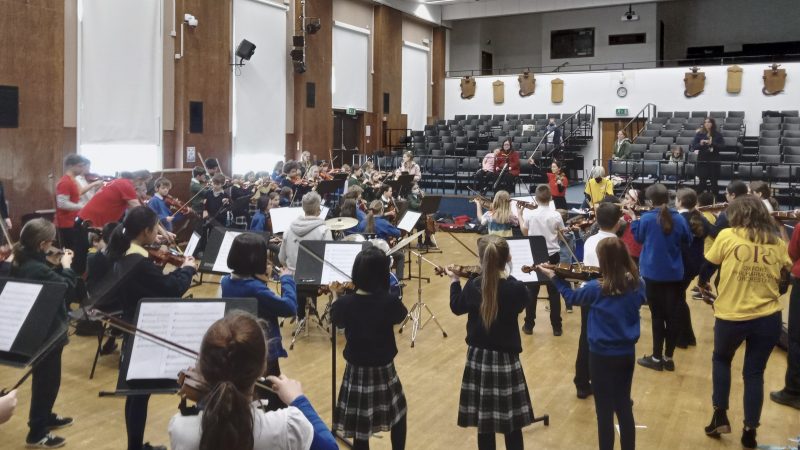Getting to Know… the Orchestra
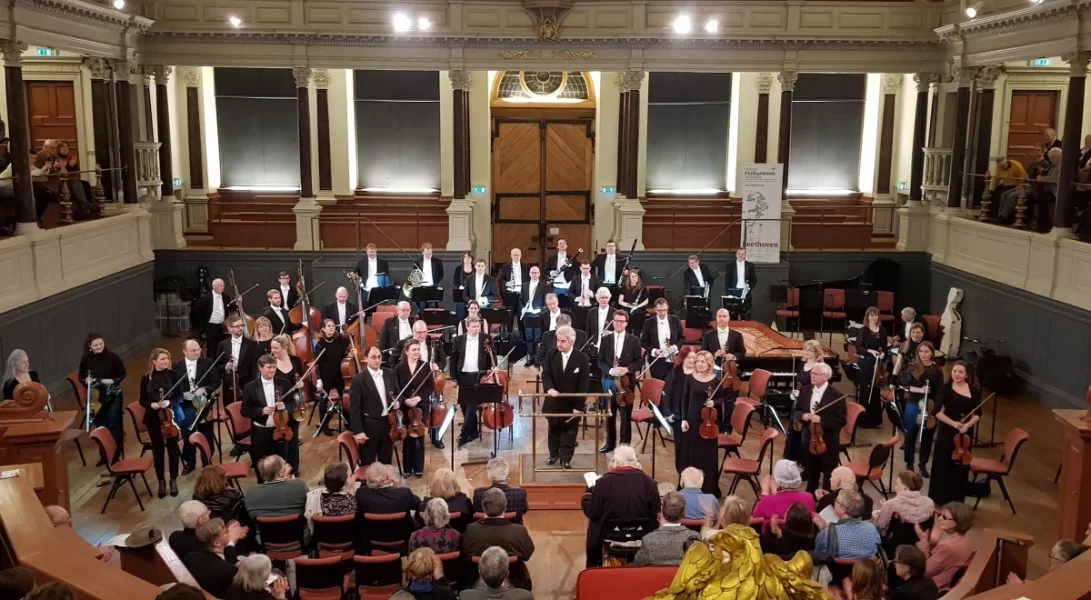
A friendly guide to the sections of the orchestra (with special guests!)
We may be a little biased, but we think classical music is awesome. From soothing sonatas to fiery finales, there’s definitely something for everyone. But if you don’t know your oboe from your elbow and ‘Puccini’ sounds more like an Italian dish than a composer, it can be hard to know where to start. So if this sounds like you, or if you just want to brush up on your orchestra trivia ahead of the next Zoom pub quiz, this blog post is for you!
Sections of the Orchestra
The classical orchestra is divided into sections, based on instrument:
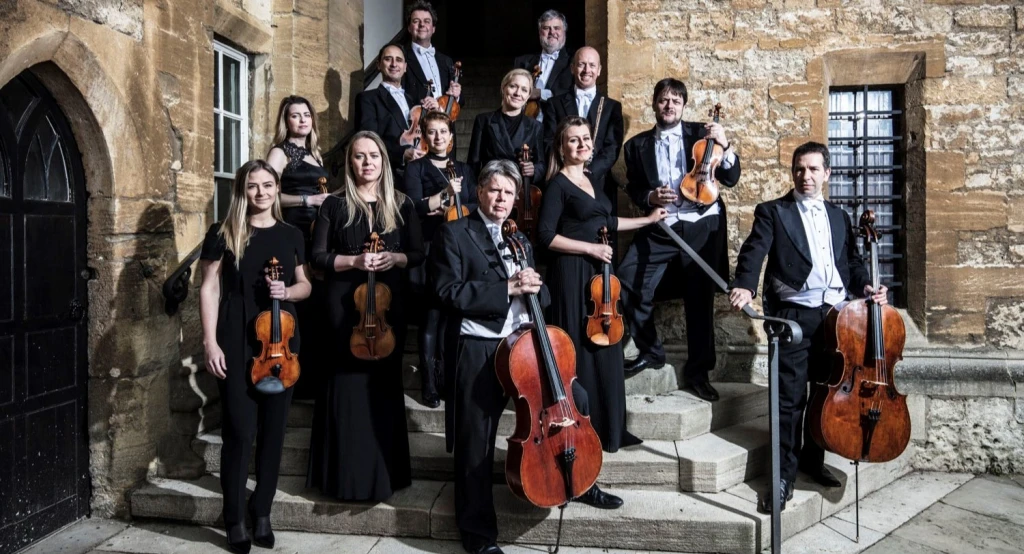
The string section pretty much does what it says on the tin, and consists of instruments that – you guessed it – have strings. They are played by drawing a bow (usually made from horse-tail hair) across the instrument’s strings to create a sound. This section usually consists of violins, violas, cellos and double basses. As a general rule: the larger the instrument, the lower it sounds. In a standard setting, string players make up the largest proportion of the orchestra and usually sit at the front.
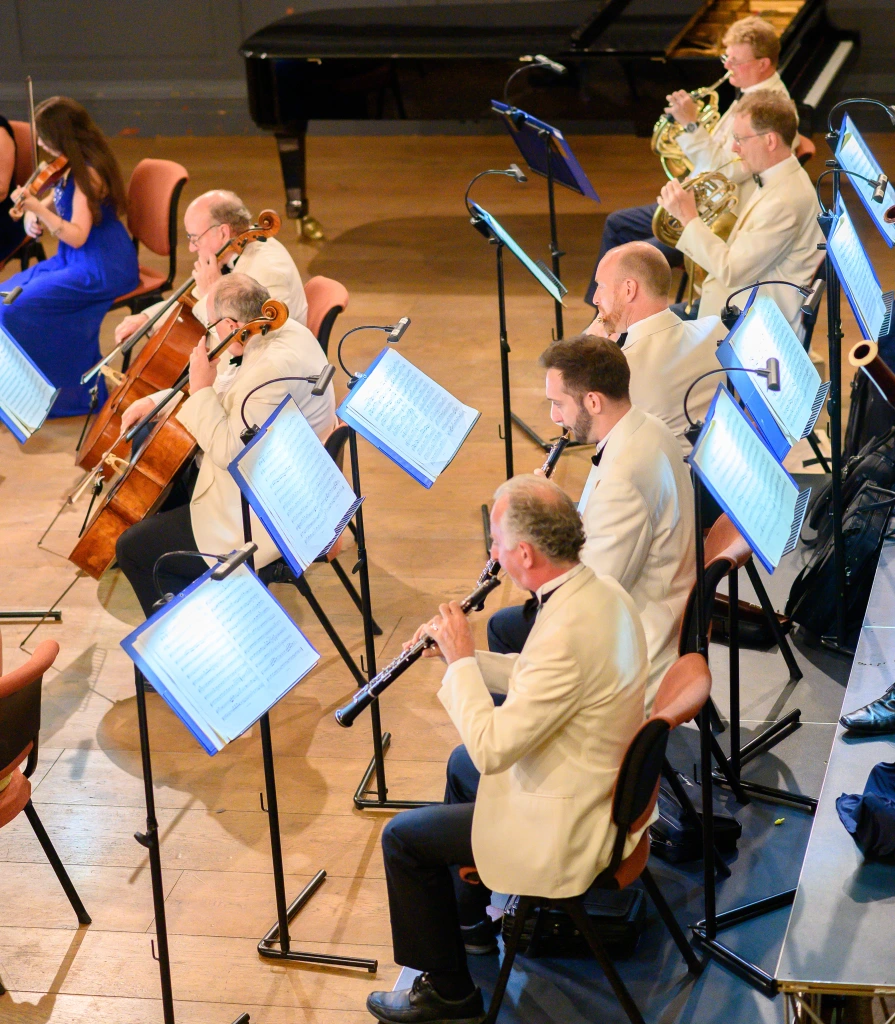
The woodwind section is not quite as self-explanatory – they all require wind in order to make a sound, but not all of them are made from wood (at least, not anymore). The woodwind section at its most basic usually consists of flutes, oboes, clarinets, and bassoons, and there are far fewer players than in the string section – often only two of each instrument! Some pieces of music call for larger woodwind sections, and this can also include additional instruments such as the piccolo (a small, very high-pitched flute), cor anglais (sometimes known as an English Horn, and a variant on the oboe), E-flat clarinet (a much smaller, higher-pitched clarinet), contrabassoon (a larger, lower-pitched bassoon), and even the occasional saxophone.
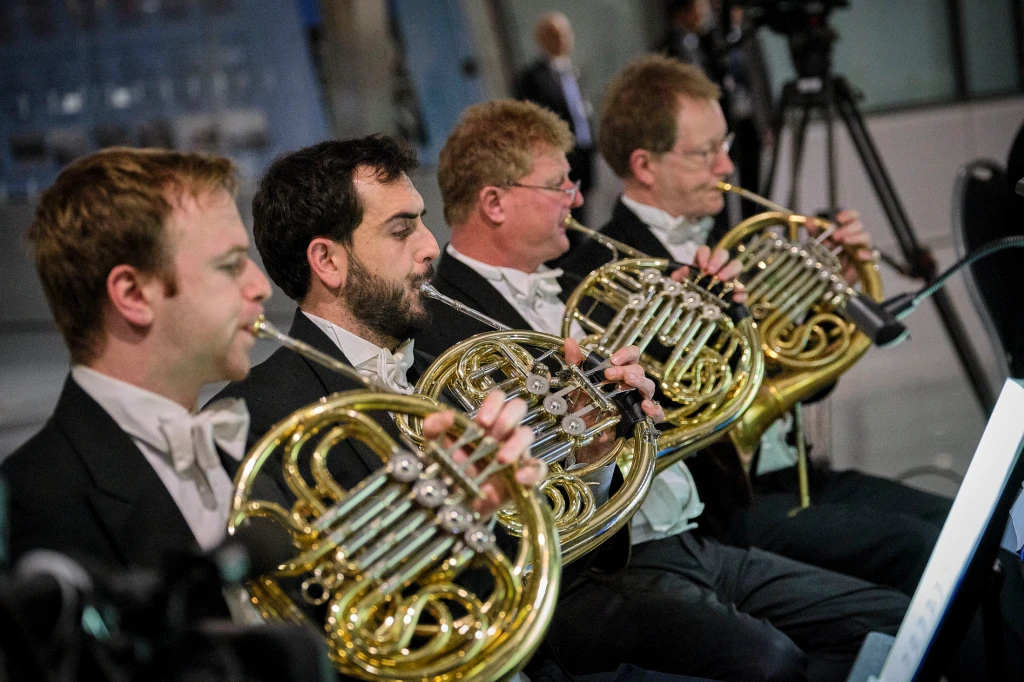
It doesn’t take a huge stretch of the imagination to guess how the brass section got its name. Definitely the shiniest section of the orchestra (and arguably the noisiest), it usually includes French horns, trumpets, trombones, and a tuba. The instruments are made up of long metallic tubes and are played by pressing your lips together and blowing through a mouthpiece. Most brass instruments have valves that are opened and closed by pressing buttons, which changes the pitch of the note – however the trombone is unique in that its pitch is altered by moving a slide back and forth. The speed at which players blow air through the instrument can also change the pitch, and this works together with the instrument’s mechanisms to enable them to play a wide range of notes.
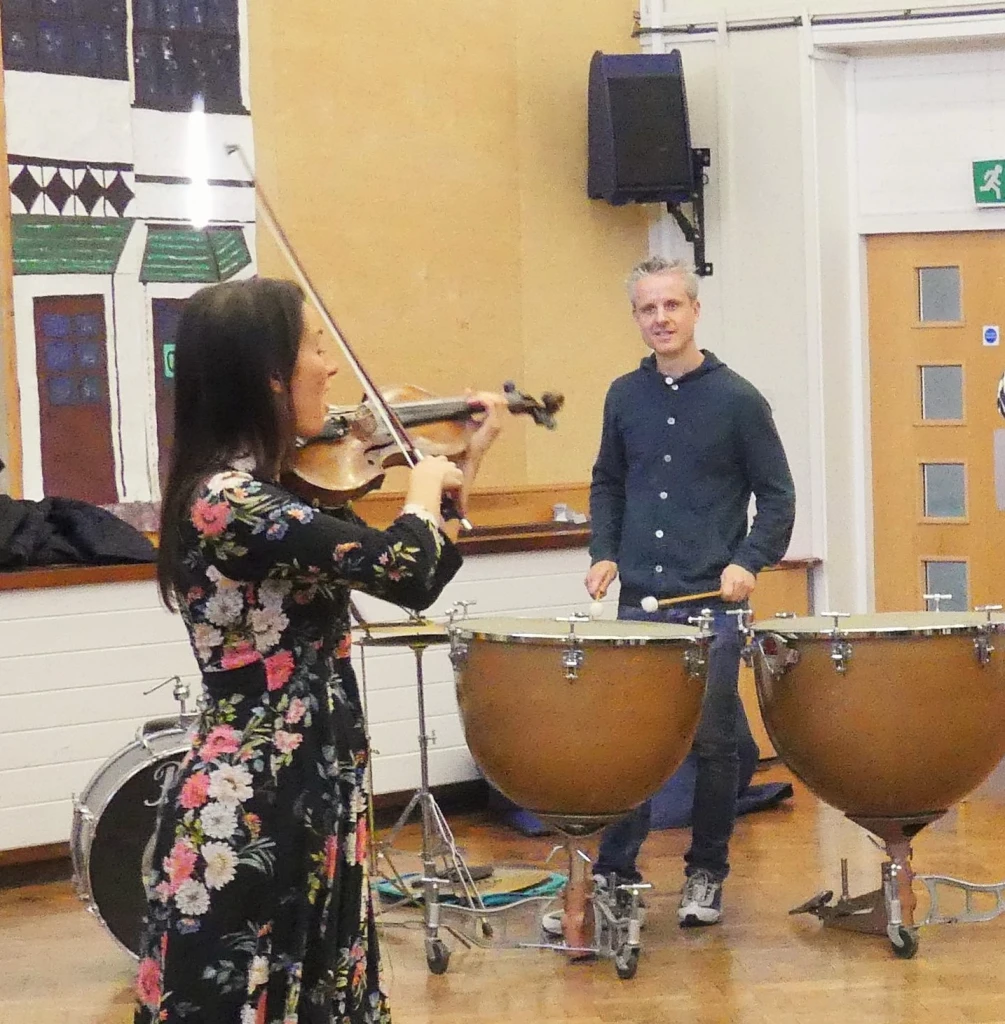
The percussion section are the brass section’s main rivals when it comes to being the noisiest section. In terms of number of players, they are often the smallest section, but more than make up for this in versatility and volume. The instruments that make up the percussion section for any given piece of music can be incredibly broad and varied, but as a general rule they almost all involve being hit, struck, tapped, stroked, beaten, or shaken (rarely stirred).
But what about…?
Unsurprisingly, not everything fits neatly into these sections and there are several instruments that often play in orchestras but haven’t been mentioned here.

© Richard Cave.
Depending on who you ask, pianos can sometimes be classified as both percussion and string instruments. This is because the inside of a piano is filled with hundreds of strings and when you press a piano key, a small felt-coated hammer hits the corresponding strings to make them vibrate and create a sound. Because of this confusion, some people also say that pianos and similar instruments (like organs and harpsichords) should belong to a ‘keyboard’ section.
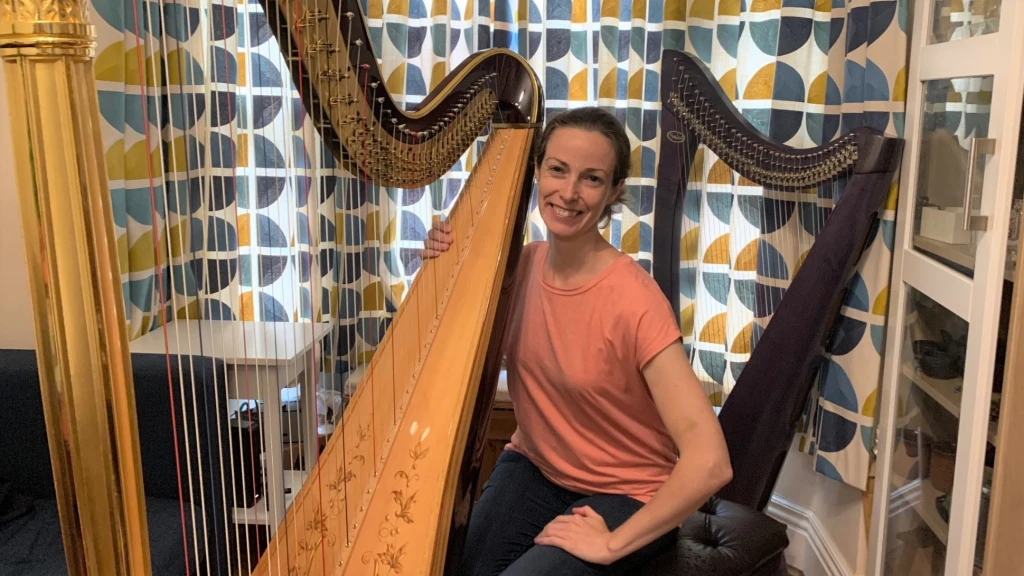
The harp is also sometimes classified as a string instrument because of the 47 strings that are plucked to create the sound. It also has seven pedals on the base of the instrument, which are used to change the tuning of the strings. However, because of the different method of playing and due to the fact that the harp is not ‘related’ to any of the other members of the string family, it is often considered a standalone instrument, basking in all its own glory!
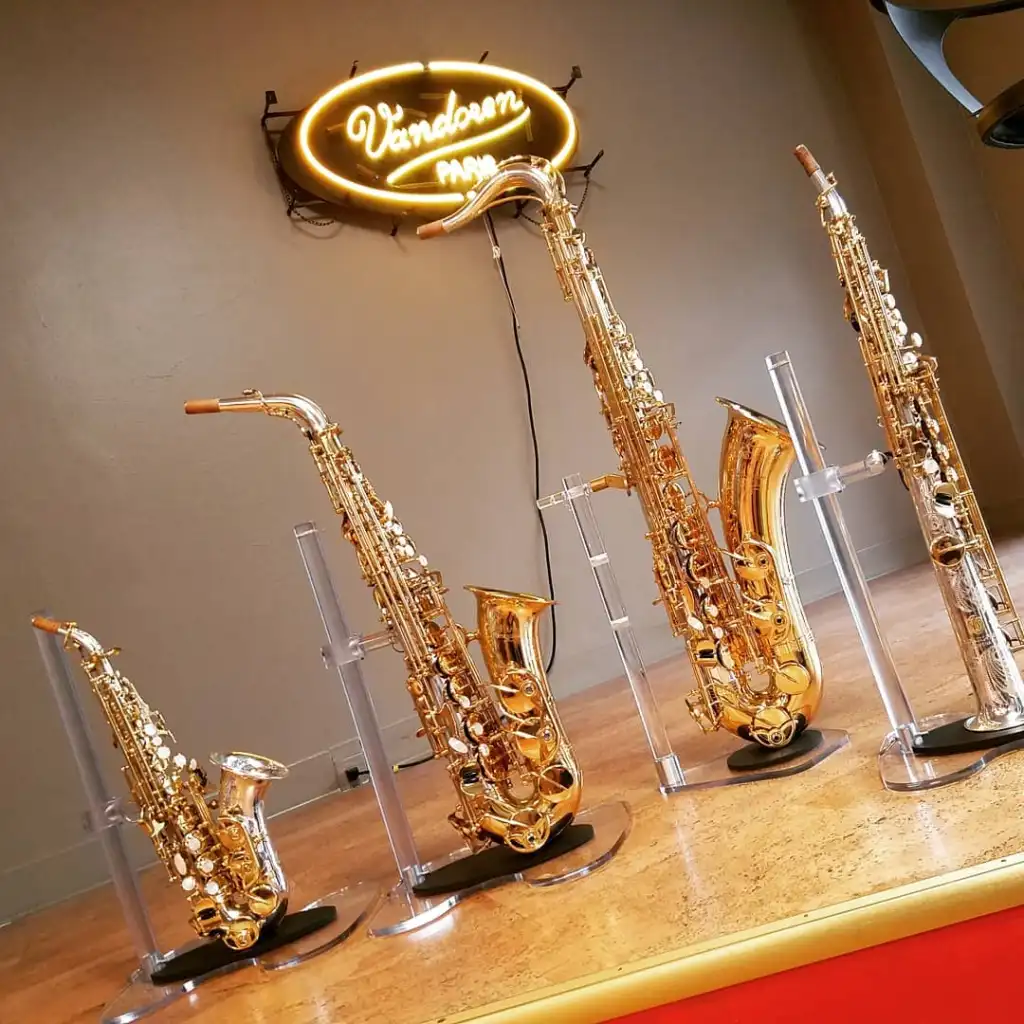
Like the piano, the saxophone also lies between two sections – this time, woodwind and brass. Sound is produced by blowing air to vibrate a reed (made from cane or fibreglass), but it is also made of brass. The saxophone was first designed in the 1840s, making it a far younger instrument than most of its orchestral siblings. This also meant that it arrived fashionably late to the orchestral scene and, whilst there are lots of cracking orchestral pieces that make great use of saxophones, there’s sadly not enough to grant the sax a permanent seat in the orchestra.
